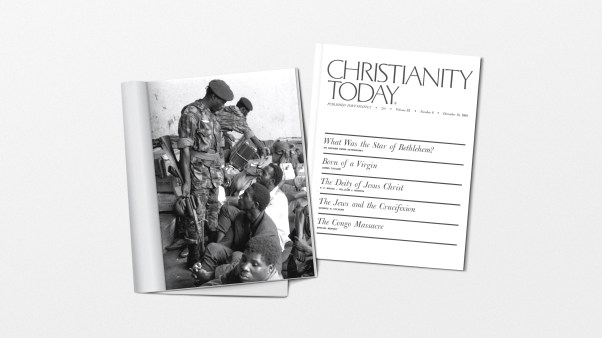BUILDING DESIGN INNOVATIONS
During thirty years as an architect and another dozen as a church consultant, I’ve worked on scores of church building projects. Time after time, these churches have stretched my thinking either by their example or by their situations requiring creative solutions.
New ways of designing church facilities can save your church money. Creativity can also turn a poorly designed building into a more effective ministry tool.
Here are several innovative ideas that, by changing your church design, can improve your ministry.
The Ministering Center
For years I told building committees that the sanctuary was the heart of the church, a sacred space devoted exclusively to the worship of God.
“Until you have such a sanctuary,” I’d say, “the church’s worship will never be all it should be.”
I was wrong.
A church in Nampa, Idaho, asked me to design a worship space with a multi-level platform, movable choir seats, portable risers, and ramps to make it easy to move props and equipment on and off stage. They envisioned using the space for dramas, for an orchestra, and for various sized choirs that could move to different locations.
Cracks began to appear in my rigid thinking. Three years later I designed my first completely flexible church facility. Worship, Sunday school, fellowship, and recreation all took place in the same area. Today I can no longer champion sanctuaries-a space designed for worship only. With soaring construction costs, many growing churches can’t keep pace with their space needs. Instead, I recommend a “ministering center,” a large area with a level floor and movable furnishings. This can be used not only for corporate worship but also weekly ministry activities. Every space is designed to be used seven days a week.
A ministering center is not revolutionary. Many congregations have worshiped temporarily on flat floors with movable seating. What’s new about it is its permanence.
The Fellowship Foyer
When a Massachusetts congregation went to two worship services, many people complained they didn’t have time to visit their friends attending the other service.
Recognizing the importance of such fellowship, the church made two changes. First, they extended the period between services to thirty minutes, giving worshipers leaving the first service time to visit with those arriving for the second. Second, they built a larger foyer to provide an area to visit.
While neither change by itself would have completely solved the problem, providing both time and space for fellowship did. When a church goes to multiple services, a foyer large enough to accommodate visiting and traffic flow in both directions is a necessity. Not only does a fellowship foyer make multiple services practical-a great economy in itself-but with the addition of a small serving kitchen, it can also replace the traditional fellowship hall.
An Alliance congregation in Oklahoma City built their fellowship foyer so that only a folding wall divided it from their worship area. The foyer doubled as an overflow space for worship. At Eden Mennonite Church in Moundridge, Kansas, movable walls allow much of their foyer to be divided and then used by small groups.
Flexible Space
In small churches, we often design classrooms for a single teacher with small classes. As the church grows, however, rows of little rooms no longer meet the church’s educational needs. A growing church may need multiple nurseries and large open spaces for children’s classes.
As teen and adult classes grow and new ones form, their need for rooms of various sizes will keep changing.
How can a church plan for such constant change?
Flexibility. For example, First Nazarene Church in Bethany, Oklahoma owns a facility called the multiplex. This octagonal building consists of pie-shaped rooms circling a center stage-platform area, which can be elevated or lowered to floor level.
On Sunday mornings, the rooms are divided for adult classes. At other times, though, some or all of the movable walls are moved to open up many possible configurations, making the space usable for weddings, funerals, dinners, and even theater-in-the-round.
Designing for Outreach
Early in my career, I designed a number of church buildings that met the needs of the church members but failed to take into account future attenders. That a building should or could be designed to help with outreach never occurred to me.
In the years since, however, I’ve discovered several effective ways to design buildings for those still to come.
1. Offices that welcome. At one church in the Northeast, to reach the secretary’s office I had to enter the front door, pass through the auditorium, climb stairs, go through a balcony, and finally open the door into the bell tower.
The other offices were equally well-hidden. Tucked away in the far corner of the sanctuary off the platform was the pastor’s office. The youth pastor’s office, off a dimly lit basement hallway, was windowless. None of the offices was identified.
The church locked the front door even during office hours. When someone pushed the door buzzer, the secretary-who was part-time and not on a regular schedule-would have to walk from the bell tower to open the door.
To solve its problem, this church converted the church parsonage next door into an administrative center with offices for the secretary and pastors. They installed a wheelchair ramp, put up a church office sign, posted office hours, and hired a full-time secretary/receptionist.
A few months later, the secretary said to me, “I’m amazed at how many people, both from within and outside the congregation, come through this door. Many of them never dropped by before. They come to get counseling, to request information, to share needs. I’m thrilled to serve all these people.”
2. Look open for business. Have you ever driven by a church on a Sunday or Wednesday evening and wondered if they were holding a service? Many church buildings today appear closed from the outside, even when bustling with activity.
Driving by Bethany (Oklahoma) First Nazarene on a weeknight, one person commented, “Something’s going on at the church tonight.”
How could he tell?
Rather than being hidden behind the church building, the most convenient parking was out front. It filled up quickly when the building was in use. In addition, the foyers had glass doors and walls so people outside could see the people inside. The building couldn’t have looked any more open for business than if it had a big neon light flashing “OPEN.”
3. A welcome mat for visitors. One simple and inexpensive way to make visitors feel welcome is to reserve for them the most convenient parking spaces.
Another way is to have driveways for unloading at the major entrances to the facility. If you’re in a rainy climate, having that area covered is a good idea. Before each service, greeters can be curbside opening car doors and welcoming worshipers. Some churches have a large, attractive sign to identify the visitor entrance.
The fellowship foyer, described earlier, can also make a building visitor friendly. Forty years ago I sometimes designed church foyers so small that if anyone stopped there to talk with a visitor for more than a few seconds, a traffic jam ensued. A spacious fellowship foyer, though, makes it easy for people to talk with visitors without worrying about being in anyone’s way.
A church in Hot Springs, Arkansas, asked me to design a building that would include a library, a bride’s room, a counseling room, and a lounge area for welcoming visitors. Because of limited budget, all these functions, as well as classroom and committee meeting space, were combined in a single room called a parlor, separated from the foyer by glass.
Visitors were invited to step into the parlor, away from the crowd, be seated, and get acquainted. A parlor can also be designed so that it serves as a reception area for visitors to the church offices during the week.
Building of the Future
I have never seen all these features in a single church facility. But the master plans I am now developing for congregations incorporate all these ideas plus others.
Designing the entire facility for efficient multiple-use, seven days a week, holds down building costs, freeing up resources for changing people’s lives. Any congregation committed to ministry and growth will find design features such as these worth considering.
What’s Worked for You?
Can you tell us about a program or activity that worked well in your church?
LEADERSHIP pays $35 to $50 (depending upon length) for each published account of fresh and effective ministry.
Send your description of a helpful ministry, method, or approach to
Ideas That Work
LEADERSHIP
465 Gundersen Drive
Carol Stream, IL 60188
Copyright © 1993 by the author or Christianity Today/Leadership Journal. Click here for reprint information on Leadership Journal.









